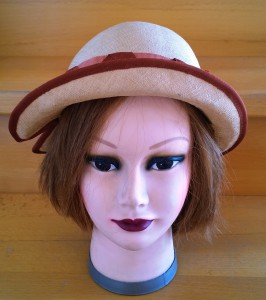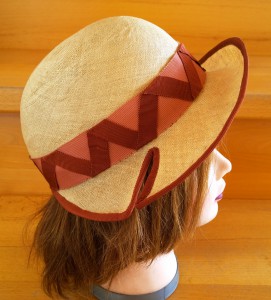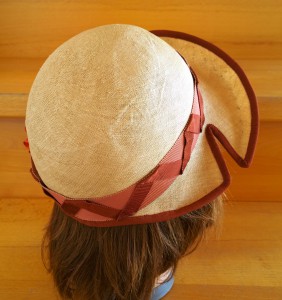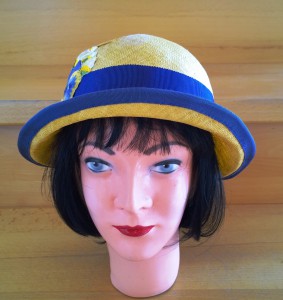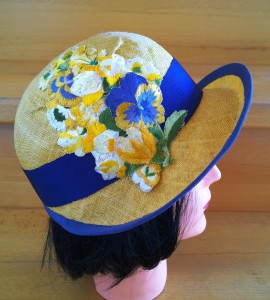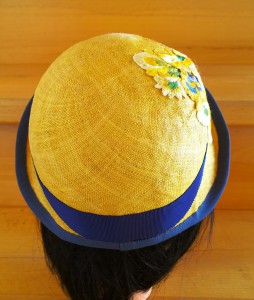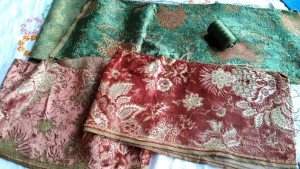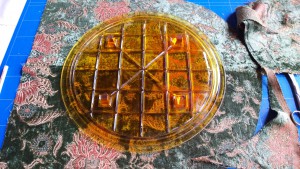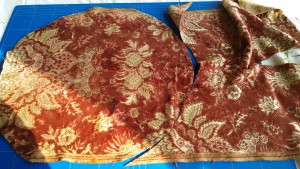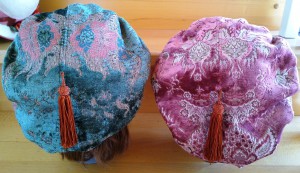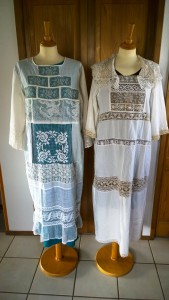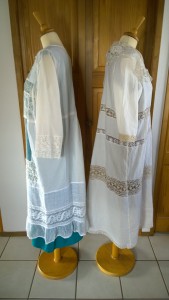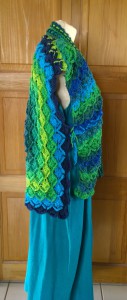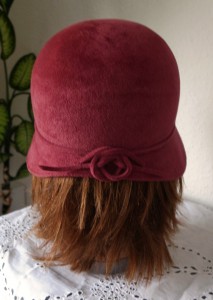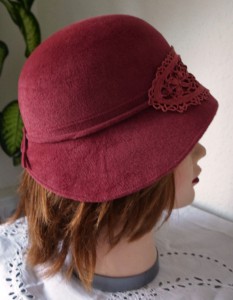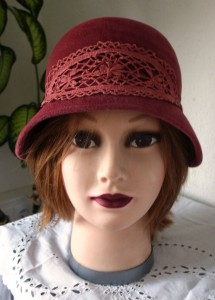The same cloche-block like in the article before, but another hat bodie. And the same problems! But why?
Not only the treatment of a hat bodie counts, but also it´s age!
Especially straw hat bodies can be to dry and overaged, if they are from the 1950s/60s or before.
Not every vintage hat bodie is concerned, some of them are good to work with and the attempt is worth it!
But some others show cracks and breaks during the process of stretching und some of the folds remain and can not be removed by damping or ironing, because the hat bodies were stored in piles or under other adverse conditions for decades, got crumpled and the material “remembers” the folds….
This hat bodie had both problems. It had some folds and in the brim-area, the straw was brittle and cracked. In such a case, make the best out of it! Depending on where the flaw is, you can make an element of decoration with the damage, like I did on the brim! If the flaw is in the crown, just enlarge it, cut it to shape, line it with some other material or, if the damage is small, use it to draw a feather or any other decoration items through. Or cover it with a ribbon.
Don´t be disappointed, if the vintage hat bodie refuses to work with you the way you want or respond with damages. Don´t give up! It won´t be a perfect hat, but still wearable. And the fine old material is always worth the trial!
